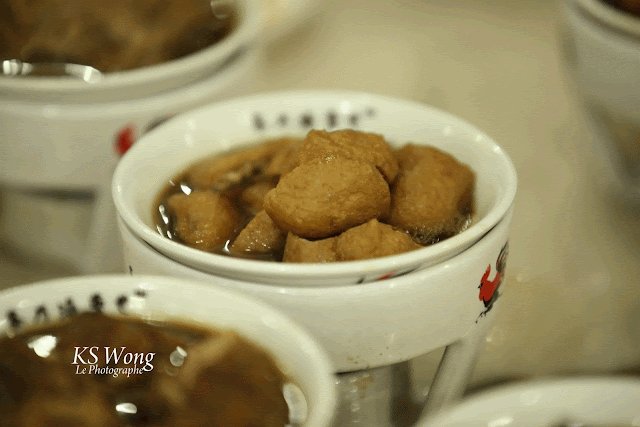Fine Dining .... Premier dining ... can u imagine, it's Bak Kut Teh
Things do evolve.... even food .... a low end dish moving up the ladder to find its way into the sphere of fine dining .... and it is a reality at Level 6, Pavilion KL, Malaysia.
The name of the joint, which bears testimony to the statement, is .....
Pao Xiang Bak Kut Teh ............................ had achieved geographical diversification, expanded its business beyond Klang (in Selangor) to spread its wings into the wider parts of the Klang Valley, to Penang, and to actually make its physical presence in Singapore (all photos herein in this post were taken at Pao Xiang@Pavilion KL - photos by KS Wong).
But what is this all about ? .... please bear with me, it is more than a food topic but before that ....
 |
| A bowl of Bak Kut Teh ..... a serving portion for one person |
Caution: NON-HALAL Topic - my apology to my Muslims friends and others who may find this offending .... it is not intended to be in such a direction, please take it from another perspective ... say educational perspective, the topic has historical significance, a substantive business, and there are tourism implications.
What is Bak Kut Teh
Bak Kut Teh (the name of the stuff, primarily pronounced as in Hokkien dialect) - it literally translates as ’meat bone tea’, consisting of meaty pork ribs simmered in a complex broth of herbs and spices (including star anise, cinnamon, cloves, dang gui, fennel seeds and garlic) for hours. And at Pao Xiang Bak Kut Teh they claim to bring in their servings of Bak Kut Teh the full flavours to warm your tummy with additional ingredients such as offal, varieties of mushroom and pieces of dried tofu or fried tofu puffs.
 |
| A shot of another bowl ..... and there is variety in the menu ..... different parts of the meat ..... bony, fatty, etc etc |
How it is eaten?
Bak kut teh is typically eaten with steamed white rice, you tiao (also known as dough fritters or Chinese crullers), offal, preserved vegetables and braised bean curd skins. Light soy sauce or dark soy sauce is used as a dipping sauce. Sliced chilli, minced garlic or chopped chilli padi are often added to the dipping sauce. Chinese tea is the preferred beverage when having bak kut teh, as it is believed to help wash down the oil and fat from the dish.
 |
| you tiao (also known as dough fritters or Chinese crullers) |
 |
| braised bean curd skins |
 |
| Bak Kut Teh .... laid out on the table |
Some arguments ..... on its origins
.... The Star, 23rd September 2009, reported ....... A “food fight” is brewing, especially in cyberspace, following Tourism Minister Datuk Seri Dr Ng Yen Yen’s statement of Malaysia’s intention to lay claim to several dishes.
The story has been widely picked up by news portals, online forums and blogs worldwide after Dr Ng said that bak kut teh and few other food dishes are Malaysian.
The Star had also in its report made reference to the writings of a blogger .....whom had said in his blog ......that Bak Kut Teh has its origin in Port Klang area,Malaysia, during British colonial administration. In those early pioneering days, much of port activities relied on Chinese migrant coolies to do the heavy manual work. They needed something nourishing to maintain their good health while toiling in the hot and humid climate. Someone with knowledge of Traditional Chinese Medicine (TCM) came out with a secret recipe of using herbs and spices to cook with pork.
In separate writings it have been argued that Bak kut teh is believed to have originated from the Fujian province of China. The introduction of the dish to Singapore and Malaysia is attributed to Hokkien immigrants who moved to this region in the 19th century. The dish is said to have been popular with the Chinese coolies as a hearty breakfast before embarking on their backbreaking tasks of the day.
The key feature or point to be made......
The key point herein is not the arguments about the its origins .... and I am not into it ..... the point of emphasis is that it is the Chinese coolies/ labourers in Malaysia and Singapore ....... 70-80 years ago or more ....... that kick start the local scene with Bak Kut Teh ....... and the key point being .....IT WAS A POOR MAN'S FOOD ..... nourishing themselves for survival .... in an environment with their very tough physical jobs.
Traditionally, it seems there are three variants of bak kut teh - Hokkien, Teochew and Cantonese versions; and in recent years we see more variations; especially the dry version.
............... However, the prime point is that it has gone to evolve itself from a food for the poor ........ up the ladder to become a popular local delicacy, and even very popular with tourists, ...... and today to be found in a restaurant in the fine dining floor of an up market shopping mall.
Can there be new developments
There have been efforts to introduce to non pork versions of Bak Kut Teh ........ with chicken and other meats ........... but there have not been substantive developments towards this end.
Perhaps, there is need to re-examine as to what has not been properly put in place .... for the non pork version of Bak Kut Teh .... it could be a wrong business model or strategy ....... getting it right can open up a huge market ........ in the halal sector ......... imagine setting a chain to also tap into the OIC countries and beyond ....... a big opportunity and even, perhaps, a golden opportunity for Malaysian branding .........
KS Wong
Kuala Lumpur, Malaysia

No comments:
Post a Comment